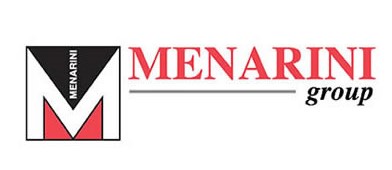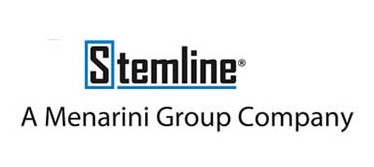Menarini Group Shares NEXPOVIO® (selinexor) Subgroup Data from BOSTON trial at the European Hematology Association Congress, Highlighting Clinical Potential in Relapsed/Refractory Multiple Myeloma


- Data demonstrate a significant 71% reduction in risk of disease progression or death in selinexor + bortezomib + dexamethasone (SVd) arm versus bortezomib + dexamethasone (Vd) arm in PI-naïve patients
- Data demonstrate a significant 47% reduction in risk of death with SVd versus Vd in multiple myeloma patients who are refractory to treatment with lenalidomide
FLORENCE (Italy), June 8, 2023 – The Menarini Group (“Menarini”), a leading Italian pharmaceutical and diagnostics company, and Stemline Therapeutics, Inc. (“Stemline”), a wholly-owned subsidiary of the Menarini Group, today announced important new data on NEXPOVIO® (selinexor) at the European Hematology Association (EHA) Congress 2023.
The two abstracts at EHA bring new subgroup data from the Phase 3 BOSTON study (NCT03110562) in relapsed refractory multiple myeloma (RRMM). In patients with just one prior line of treatment, median progression-free survival (mPFS) was 21 months for those treated with SVd, versus 10.7 months for those treated with Vd alone (HR 0.62). In proteasome inhibitor (PI)-naïve patients, the mPFS was 29.5 months with SVd compared to 9.7 months with Vd alone (HR 0.29). In patients who were refractory to lenalidomide, overall survival was 26.7 months for the SVd arm, compared to 18.6 months for the Vd arm (HR 0.53). These efficacy analyses were based on the final data cut from the BOSTON trial in February 2021, representing a one-year update of previously presented data from 2020.
“The data presented today emphasize the synergy between selinexor and bortezomib, highlighting the importance of a double mode of action switch. These results are particularly relevant considering the increased use of the daratumumab lenalidomide dexamethasone combination in clinical practice today,” said Professor Maria-Victoria Mateos, MD, PhD, University Hospital Salamanca, Spain. “These findings further support the use of selinexor in combination with bortezomib in PI / bortezomib-naïve or lenalidomide-refractory RRMM patients, as well as for patients at first relapse.”
“We are proud to present these new subgroup data on selinexor,” said Elcin Barker Ergun, CEO of the Menarini Group. “We are committed to bringing transformative new therapeutic options to the patients and families affected by cancer, including multiple myeloma.”
The most common (≥25%) treatment-emergent adverse events (AEs) with SVd versus Vd in patients with one prior line of treatment were thrombocytopenia (61.6% vs 28.6%), nausea (52.5% vs 11.2%), fatigue (45.4% vs 17.3%), peripheral neuropathy (38.4% vs 52.0%), diarrhea (34.3% vs 24.5%), and anemia (30.3% vs 26.5%). Safety findings were similar in the PI-naïve and bortezomib-naïve subgroups, as well as the lenalidomide refractory subgroup. Safety data in these subgroups were consistent with those observed in the overall BOSTON study population.
2023 EHA Annual Meeting Presentation Details
Abstract Title: Efficacy, Survival and Safety of Selinexor, Bortezomib and Dexamethasone (SVd) in Patients with Lenalidomide-Refractory Multiple Myeloma: Subgroup Data from the BOSTON Trial
Poster #: P886
Session Title: Myeloma and other monoclonal gammopathies - Clinical
Session Date and Time: June 9, 2023 18:00-19:00 CET
Presentation Type: Poster
Presenting Author: Dr. Maria-Victoria Mateos
Abstract Title: Selinexor, bortezomib, and dexamethasone in patients with previously treated multiple myeloma: updated results of BOSTON trial by prior therapies
Poster #: P917
Session Title: Myeloma and other monoclonal gammopathies - Clinical
Session Date and Time: June 9, 2023 18:00-19:00 CET
Presentation Type: Poster
Presenting Author: Dr. Maria-Victoria Mateos
In December 2021, Karyopharm Therapeutics Inc. and Menarini established an exclusive licensing partnership. Under this agreement, which was later amended in May 2022 and in March 2023, Menarini holds the responsibility for commercializing all existing and upcoming indications of NEXPOVIO in the European Economic Area, United Kingdom, Switzerland, CIS countries, Turkey, Middle East & Africa, and Latin America. Stemline Therapeutics B.V., a wholly-owned subsidiary of Menarini, is leading all commercialization activities in Europe.
About Multiple Myeloma in Europe
Multiple myeloma is an incurable cancer with significant morbidity and the second most common hematologic malignancy. According to the World Health Organization, in 2020, there were approximately 51,000 new cases and 32,000 deaths from multiple myeloma in Europe1. While the treatment of multiple myeloma has improved over the last 20 years, and overall survival has increased considerably, the disease remains incurable, and nearly all patients will eventually relapse and develop disease that is refractory to all approved anti-myeloma therapies. Therefore, there continues to be a high unmet medical need for new therapies, particularly those with novel mechanisms of action.
About the BOSTON study
The FDA and EMA approvals of selinexor with bortezomib and dexamethasone are based on the Phase 3 BOSTON study, which was a multi-center, randomized study that evaluated 402 adult patients with relapsed or refractory multiple myeloma who had received one to three prior lines of therapy. The study was designed to compare the efficacy, safety, and certain health-related quality of life parameters of once-weekly SVd versus twice-weekly Vd. The primary endpoint of the study was progression-free survival and key secondary endpoints included overall response rate, rate of peripheral neuropathy, and others. To learn more about this study, please refer to the Karyopharm press release announcing the publication of the BOSTON study results in The Lancet, issued on November 12, 2020.
About NEXPOVIO® (selinexor)
NEXPOVIO®has been approved in the following oncology indications by the European Commission: (i) in combination with dexamethasone for the treatment of multiple myeloma in adult patients who have received at least four prior therapies and whose disease is refractory to at least two proteasome inhibitors, two immunomodulatory agents and an anti-CD38 monoclonal antibody, and who have demonstrated disease progression on the last therapy; and (ii) in combination with bortezomib and dexamethasone for the treatment of adults with multiple myeloma who have received at least one prior therapy. The marketing authorization of NEXPOVIO is valid in the EU Member States as well as Iceland, Liechtenstein, Norway, and Northern Ireland. NEXPOVIO has been commercially available in Germany and Austria since Q4 2022.
NEXPOVIO is a first-in-class, oral exportin 1 (XPO1) inhibitor. NEXPOVIO functions by selectively binding to and inhibiting the nuclear export protein exportin 1 (XPO1, also called CRM1). NEXPOVIO blocks the nuclear export of tumor suppressor, growth regulatory and anti-inflammatory proteins, leading to accumulation of these proteins in the nucleus and enhancing their anti-cancer activity in the cell. The forced nuclear retention of these proteins can counteract a multitude of the oncogenic pathways that, unchecked, allow cancer cells with severe DNA damage to continue to grow and divide in an unrestrained fashion.
Please see NEXPOVIO® Summary of Product Characteristics (SmPC) and European Public Assessment Report at www.ec.europa.eu
Please refer to local prescribing information where NEXPOVIO is approved for full information.
IMPORTANT SAFETY INFORMATION
Contraindications: Hypersensitivity to selinexor or to any of the excipients listed in the SmPC.
Special warnings and precautions for use:
Recommended concomitant treatments
Patients should be advised to maintain adequate fluid and caloric intake throughout treatment. Intravenous hydration should be considered for patients at risk of dehydration.
Prophylactic concomitant treatment with a 5-HT3 antagonist and/or other anti-nausea agents should be provided prior to and during treatment with NEXPOVIO®.
Haematology:
Patients should have their complete blood counts (CBC) assessed at baseline, during treatment, and as clinically indicated. Monitor more frequently during the first two months of treatment.
Thrombocytopenia:
Thrombocytopenic events (thrombocytopenia and platelet count decreased) were frequently reported in adult patients receiving selinexor, which can be severe (Grade 3/4).
Grade 3/4 thrombocytopenia can sometimes lead to clinically significant bleeding and in rare cases may lead to potentially fatal haemorrhage. Thrombocytopenia can be managed with dose interruptions, modifications, platelet transfusions, and/or other treatments as clinically indicated.
Patients should be monitored for signs and symptoms of bleeding and evaluated promptly.
Neutropenia:
Severe neutropenia (Grade 3/4) has been reported with selinexor. In a few cases concurrent infections occurred in patients with Grade 3/4 neutropenia. Patients with neutropenia should be monitored for signs of infection and evaluated promptly.
Gastrointestinal toxicity:
Nausea, vomiting, diarrhoea, which sometimes can be severe and may require the use of anti-emetic and anti-diarrhoeal medicinal products. Prophylaxis with 5HT3 antagonists and/or other anti-nausea agents should be provided prior to and during treatment with selinexor. Fluids with electrolytes should be administered to prevent dehydration in patients at risk. Nausea/vomiting can be managed by dose
interruptions, modifications, and/or initiation of other antiemetics medicinal products as clinically indicated. Diarrhoea can be managed with dose interruptions, modifications and/or administration of anti-diarrhoea medicinal products.
Weight loss and anorexia:
Patients should have their body weight, nutritional status and volume checked at baseline, during treatment, and as clinically indicated. Monitoring should be more frequent during the first two months of treatment. Patients experiencing new or worsening decreased appetite and weight may require dose modification, appetite stimulants, and nutritional consultations.
Confusional state and dizziness:
Patients should be instructed to avoid situations where dizziness or confusional state may be a problem and to not take other medicinal products that may cause dizziness or confusional state without adequate medical advice. Patients should be advised not to drive or operate heavy machinery until symptoms resolve.
Hyponatraemia:
Patients should have their sodium levels checked at baseline, during treatment, and as clinically indicated. Monitoring should be more frequent during the first two months of treatment. Hyponatraemia should be treated as per medical guidelines (intravenous sodium chloride solution and/or salt tablets), including dietary review.
Cataract:
Selinexor can cause new onset or exacerbation of cataract. Ophthalmologic evaluation may be performed as clinically indicated. Cataract should be treated as per medical guidelines, including surgery if warranted.
Tumour lysis syndrome (TLS):
TLS has been reported in patients receiving therapy with selinexor. Patients at a high risk for TLS should be monitored closely. Treat TLS promptly in accordance with institutional guidelines.
Fertility, pregnancy and lactation
Women of childbearing potential should be advised to avoid becoming pregnant or abstain from sexual intercourse while being treated with selinexor and for at least 1 week following the last dose of selinexor.
Women of childbearing potential/contraception in males and females:
Women of childbearing potential and male adult patients of reproductive potential should be advised to use effective contraceptive measures or abstain from sexual intercourse while being treated with selinexor and for at least 1 week following the last dose of selinexor.
Pregnancy:
There are no data from the use of selinexor in pregnant women. Selinexor is not recommended during pregnancy and in women of childbearing potential not using contraception.
If the patient becomes pregnant while taking selinexor, selinexor should be immediately discontinued, and the patient should be apprised of the potential hazard to the foetus.
Breast-feeding:
It is unknown whether selinexor or its metabolites are excreted in human milk. A risk to breast-fed children cannot be excluded. Breast-feeding should be discontinued during treatment with selinexor and for 1 week after the last dose.
Undesirable effects
Summary of the safety profile
The most frequent adverse reactions (≥30%) of selinexor in combination with bortezomib and dexamethasone were nausea, thrombocytopenia, fatigue, anaemia, decreased weight, diarrhea, and peripheral neuropathy.
The most commonly reported serious adverse reactions (≥3%) were pneumonia, cataract, sepsis, diarrhoea, vomiting and anaemia.
The most frequent adverse reactions (≥30%) of selinexor in combination with dexamethasone were nausea, thrombocytopenia, fatigue, anaemia, decreased appetite, decreased weight, diarrhoea, vomiting, hyponatraemia, neutropenia and leukopenia.
The most commonly reported serious adverse reactions were pneumonia, sepsis thrombocytopenia, acute kidney injury, and anaemia.
Description of selected adverse reactions
Infections: Infection was the most common non-haematological toxicity.
In patients who received selinexor in combination with bortezomib and dexamethasone, upper respiratory tract infection and pneumonia were the most commonly reported infections in 21% and 15% of patients, respectively.
In patients who received selinexor in combination with dexamethasone, upper respiratory tract infection and pneumonia were the most commonly reported infections (in 15% and 13% of patients, respectively) with 25% of reported infections being serious and fatal infections occurring in 3% of treated patients.
Elderly population
Patients 75 years and older had a higher incidence of discontinuation due to an adverse reaction, higher incidence of serious adverse reactions, and higher incidence of fatal adverse reactions.
Reporting of suspected adverse reactions
Reporting of suspected adverse reactions after authorisation of the medicinal product is important. It allows continued monitoring of the benefit/risk balance of the medicinal product. Healthcare professionals are asked to report any suspected adverse reactions via the national reporting system listed in Appendix V.
About Menarini Group
The Menarini Group is a leading international pharmaceutical and diagnostics company, with a turnover of over $4 billion and over 17,000 employees. Menarini is focused on therapeutic areas with high unmet needs with products for oncology, cardiology, pneumology, gastroenterology, infectious diseases, diabetology, inflammation, and analgesia. With 18 production sites and 9 Research and Development centers, Menarini's products are available in 140 countries worldwide. For further information, please visit www.menarini.com and LinkedIn.
About Stemline Therapeutics
Stemline Therapeutics Inc., a wholly-owned subsidiary of the Menarini Group, is a commercial-stage biopharmaceutical company focused on the development and commercialization of novel oncology therapeutics. Stemline commercializes elacestrant in the United States, an oral small molecule endocrine therapy indicated for the treatment of postmenopausal women or adult men with estrogen receptor (ER)-positive, human epidermal growth factor receptor 2 (HER2)-negative, ESR1-mutated advanced or metastatic breast cancer with disease progression following at least one line of endocrine therapy. Stemline also commercializes ELZONRIS® (tagraxofusp-erzs), a novel targeted treatment directed to CD123 for patients with blastic plasmacytoid dendritic cell neoplasm (BPDCN), an aggressive hematologic cancer, in the United States and Europe, which is the only approved treatment for BPDCN in the US and EU to date. Stemline also commercializes NEXPOVIO® in Europe, an XPO1 inhibitor for multiple myeloma. Stemline also has an extensive clinical pipeline of small molecules and biologics in various stages of development for a host of solid and hematologic cancers.
References
1 World Health Organization. 2020. https://gco.iarc.fr/today/data/factsheets/cancers/35-Multiple-myeloma-fact-sheet.pdf
Media Contacts
| The Menarini Group |























